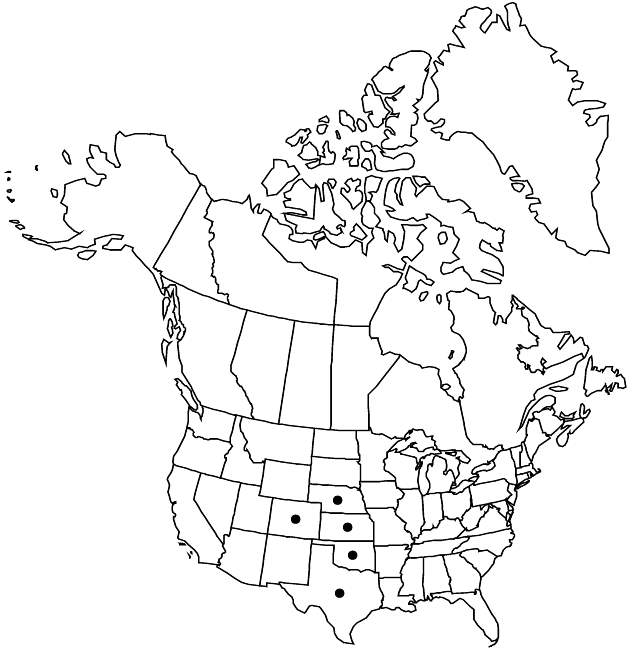Ambrosia grayi
Field & Lab. 17: 174. 1949.
Perennials, 10–30+ cm. Stems erect. Leaves mostly alternate; petioles 10–45+ mm; blades elliptic to ovate, 45–60 (–100+) × 30–45 (–75+) mm, usually 1–2-pinnately lobed (lobes ± lanceolate), bases cuneate, ultimate margins serrate, abaxial faces densely sericeous or strigillose (silver or grayish), adaxial faces strigillose. Pistillate heads clustered, proximal to staminates; florets (1–) 2. Staminate heads: peduncles 1–2 mm; involucres saucer-shaped, 3.5–5+ mm diam., strigillose; florets 8–25 (–40+). Burs: bodies ± pyriform to globose, 3–5+ mm, stipitate-glandular, spines 8–12+, scattered, stoutly conic, 0.5–1+ mm, tips straight. 2n = 36.
Phenology: Flowering Aug–Sep.
Habitat: Wet or seasonally wet flats, depressions, alkaline, clay soils, prairies
Elevation: 600–1200 m
Distribution

Colo., Kans., Nebr., Okla., Tex.
Discussion
Selected References
None.
Lower Taxa
"stipitate-glandular" is not a number.